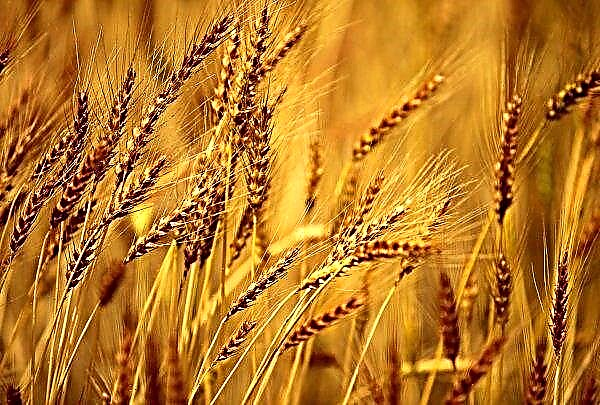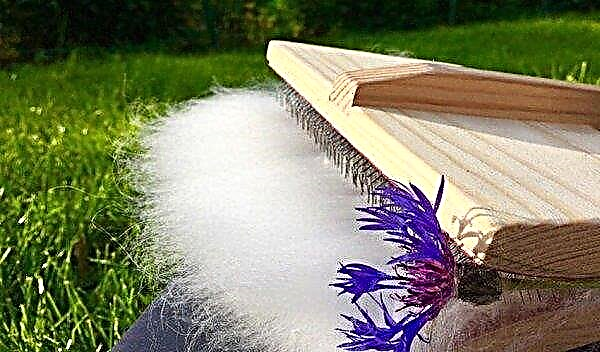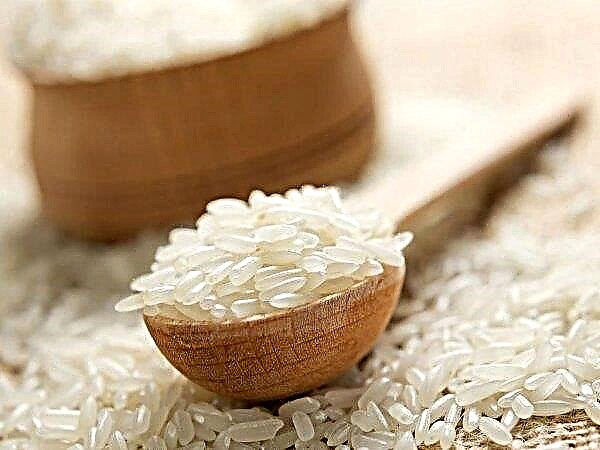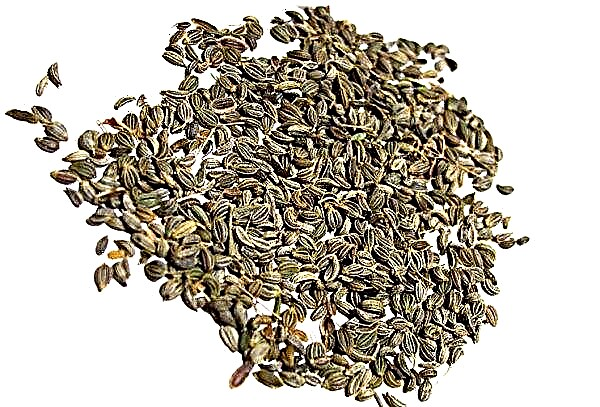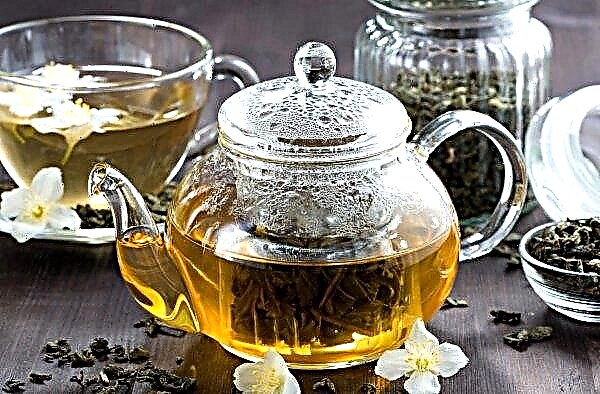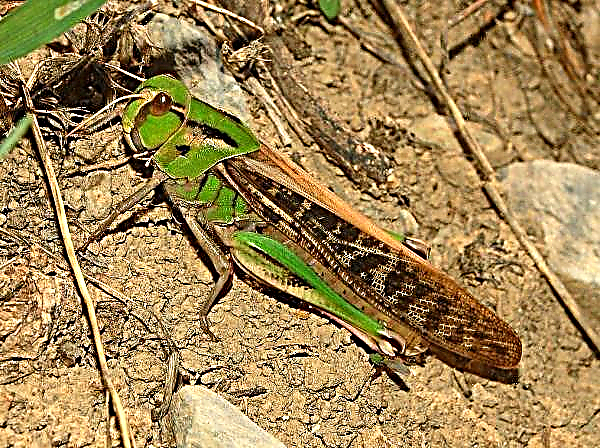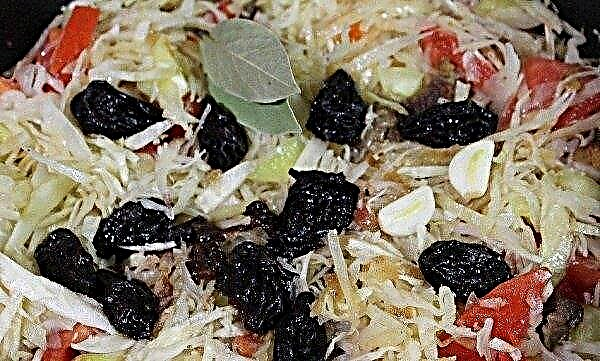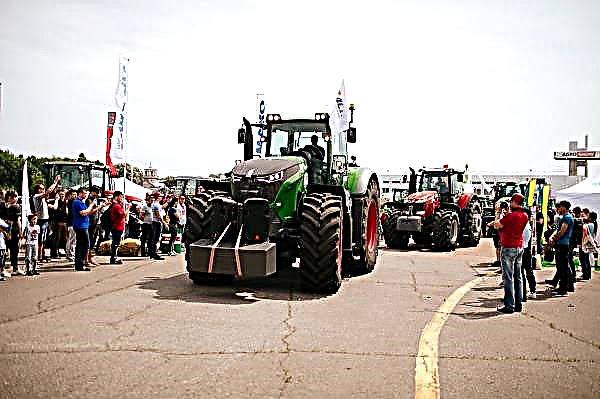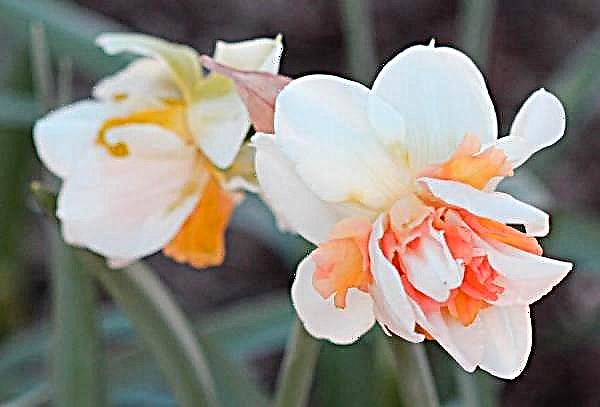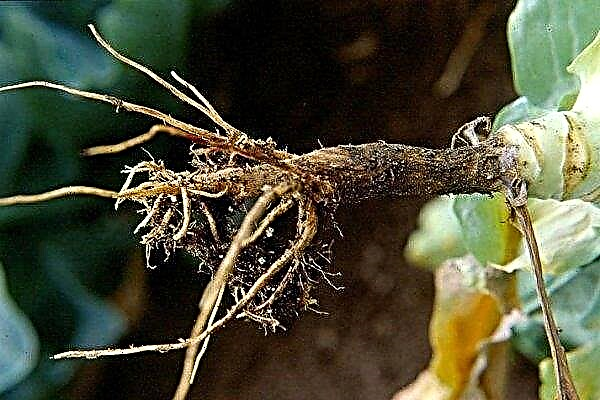Potato variety Colette in the first place should be of interest to lovers of early ripe fruits that do not darken during the heat treatment. With comparative ease of care, this variety is able to bring a rich harvest with high taste characteristics and for this reason alone deserves attention. We suggest you learn more about the potato Colette and pay attention to the peculiarities of its cultivation.
Description and characteristic
Colette belongs to the early-ripening universal varieties of German origin, among the positive features of which highlight the possibility of obtaining a crop twice a season. The ripening period of this type of potato does not exceed 50–65 days, and the mass of fruits in a state of full maturity can reach 70–125 g. The total yield of the variety reaches 600 kg / ha, and from six to eleven potatoes are formed on each bush. Taste is at a high level, tubers are characterized by average digestibility, but they do not change color during heat treatment.
Photo gallery
Upon careful inspection of the grown crop, it is easy to notice that the yellow skin of the tubers is very smooth to the touch, with superficial, poorly developed eyes. The pulp of rounded oblong fruit inside may have a light yellow or cream color, and the amount of starch contained in it often reaches 18% of the total mass of fresh product.Did you know? Potatoes are used in a wide variety of culinary fields, and some nationalities use it in the preparation of strong drinks. For example, in modern Iceland, potato vodka is very popular, and in the presence of ground malt and yeast it can be made even at home.
Advantages and disadvantages
- Among the main advantages of the described variety, it is worth highlighting the following positive features:
- high yields;
- the possibility of re-harvesting in the same season;
- good taste;
- excellent keeping quality of harvested tubers;
- fast germination of plantings with good growth;
- identical external data of all fruits (the shape and weight of each potato almost completely correspond to the characteristics of other fruits planted on the same site).
The disadvantages of growing Colette cultivars include high requirements for temperature conditions (the cultivar belongs to thermophilic plants) and the need for regular watering, which can be difficult to accomplish with mass planting of large areas.
Planting and growing potatoes
If the described variety is completely suitable for you and the region of plant cultivation allows you to hope for a plentiful harvest, then it remains only to choose the most suitable planting dates, to properly prepare the site and seed. As for the vegetable planting technique, it is based on the same principles as the planting of other varieties of potatoes. Consider each stage of growing in more detail.
Optimal timing
Given the high thermophilicity of the Colette variety, it is not surprising that the choice of specific planting dates depends on the climatic region of the crop cultivation. So, in the southern regions of the Russian Federation, you can begin to complete the task already at the end of April, but in the central and northern regions it is better to postpone this until the middle or even the end of May.
An indicator of the readiness of the soil for planting tubers will be its warming up to + 10 ... + 12 ° C (at a depth of 10-12 cm), sufficient moisture and friability, as well as the absence of the possibility of return frosts. Too early or, conversely, late planting lead to a significant decrease in crop yields.
Crop rotation
Like many other potato varieties, Colette tubers grow better in a loose and nutritious substrate, especially if the planting area changes every year. Observing the rules of crop rotation, you should not plant the crop in the same place 2 or 3 years in a row, because even if there is enough fertilizer, the substrate is still depleted, which affects the yield indicators. It is good to plant tubers in the area where beans, cabbage, root crops and perennial plants of winter varieties were grown last year. It will also be nice to sow mustard in the fall, which will only contribute to increased soil looseness. It is not recommended to plant potatoes after tomatoes or other nightshade, which have similar ailments and are affected by the same pests.
It is good to plant tubers in the area where beans, cabbage, root crops and perennial plants of winter varieties were grown last year. It will also be nice to sow mustard in the fall, which will only contribute to increased soil looseness. It is not recommended to plant potatoes after tomatoes or other nightshade, which have similar ailments and are affected by the same pests.
Important! To reduce the likelihood of damage to planted potatoes by pathogens, never leave plant debris on the site. Even the beneficial predecessors of this culture can be a refuge for sources of infection.
What should be the land
The preparation of land on the site selected for potatoes begins in the fall, when all plant debris is removed from the garden, and the soil is plowed to the depth of a bayonet shovel. After that, depending on the composition of the soil, fertilizers can also be applied that can increase germination and provide a plentiful crop in the new season. For fertile plots, 2–2.5 kg of manure per 100 m² of land is used, supplementing it with 1.5–2 kg of ammonium nitrate, 2 kg of superphosphate and 1–1.5 kg of potash mixtures. To fertilize the territory where nothing has been cultivated for a long time, it is better to prepare 2.5–3 kg of manure, 2.5–3 kg of nitrogen-containing fertilizers, 3 kg of phosphate and 2–2.5 kg of potash. This mixture will also be enough to increase the nutritional value of one hundredths.
To fertilize the territory where nothing has been cultivated for a long time, it is better to prepare 2.5–3 kg of manure, 2.5–3 kg of nitrogen-containing fertilizers, 3 kg of phosphate and 2–2.5 kg of potash. This mixture will also be enough to increase the nutritional value of one hundredths.
In addition, regardless of the composition of the soil in any territories, it is useful to use wood ash, embedding it in the soil at the rate of 5-10 kg per 100 m². 3 weeks before planting potatoes, it remains only once again to plow the site and level it for the organization of holes.
Preparing planting material
About 14 days before the proposed planting, the harvested potato seed material must be removed from the cellar, carefully inspected and selected only high-quality and completely healthy tubers, possibly with hatching seedlings (appear from the eye). Sometimes, to increase crop yields and protect against disease, tubers can be processed with nutrient formulations like Nitrofoski or Mortar. This procedure is carried out in several stages with a break of 10 days. For better germination of tubers and ensure their rapid germination, the seed material can be placed in a well-lit place, spreading the fruits on a tray in one layer. The main thing is that moisture does not get on them, causing the plants to rot.
For better germination of tubers and ensure their rapid germination, the seed material can be placed in a well-lit place, spreading the fruits on a tray in one layer. The main thing is that moisture does not get on them, causing the plants to rot.
Landing technology
Having prepared the site and the seed itself for planting in open ground, it remains only to properly organize the holes. According to the reviews of gardeners, it is best to place the tubers of the described variety in long beds with a row spacing of at least 75 cm. The distance between plants in the same row can vary between 30–40 cm, and as for the depth of incorporation of tubers, a value of 10 cm.
Did you know? In the old days, potatoes were considered a poisonous plant and did not eat it. There is a certain amount of truth in this, but in order to be poisoned, it is necessary to eat at least 1 kg of raw green tubers, since they contain a high concentration of solanine.
The technology of planting the Colette variety is based on all the same actions as the planting of other varieties of potatoes: prepared tubers are simply placed in a hole and covered with moist soil, slightly tamping it. All further care activities will be carried out after the emergence of young shoots.
Potato care after planting
Like other varieties of vegetables, the Colette potato variety has a number of requirements for growing conditions and planting care, so for the success of the case, the following information should be taken into account:
- Watering and fertilizing the substrate. The deliberate application of fluid to the soil is carried out only when there has been no rain in the growing region for a long time. At the same time, do not forget that this variety loves moist soil, so when it dries to a depth of more than 5 cm, it is advisable to dose the liquid. He needs potato top dressing throughout the growing season, but with the use of different nutritional compositions. Before flowering, for these purposes, you can use the solution "Solution" or "Effekton", especially if you notice that the leaves have lost their bright green color, and the tops seem excessively thin. The second and third time the plant is fed with the same compounds, but not more than 10 days after the previous feeding. The method of preparation of the fertilizer depends on its type, but most often 1 tbsp. a spoon is diluted in 10 liters of water. During potato budding, additional feeding with wood ash can be carried out, dissolving 100 g of the substance in 10 l of water.

- Loosening the soil and removing weeds. These care measures are most often carried out after good wetting of the substrate, when a crust begins to form on its surface. By fluffing up the substrate, you provide good air exchange between the external environment and the potato rhizome, and by removing weeds you contribute to a better development of the crop (many wild plants drown out the cultural plantings). For the first time, the soil is loosened after the appearance of the first seedlings, but you should not deepen the tool by more than 1–1.5 cm, since there is a possibility of damage to young plants. In the future, weed control and loosening of the soil is convenient to combine with hilling of the substrate.

- Hilling Colette It provides for an embankment of soil closer to the trunk of the plant, which will further give the bush stability and protect the roots from excessive evaporation of moisture. Usually this procedure is carried out in several stages: for the first time at the stage of the appearance of the first pairs of true leaves (you can even hide them under a fluffy substrate), and the second after the flowering of the plant begins.
Important! Hilling should only be done with soft, fluffy and slightly moist soil, which will not impede the entry of moisture and nutrients into the deeper layers. A dry, dusty, or even harder substrate is not suitable for these purposes.
Grade Diseases and Pests
The Colette variety has good resistance to popular potato ailments like cancer or golden nematodes. Damage to late blight is possible, but due to the early ripening of the crop, this is a relatively rare occurrence. To prevent an ailment, you can treat the planting material with special chemical compounds: the Cruiser, Force, or a mixture of Prestige and Maxima.
Much more dangerous for potatoes will be pests, among which the Colorado potato beetle and wireworm are more common than others. In the first case, leaves and shoots suffer, and in the second, the main blow of the pest falls on the tubers in which it forms passages. In the fight against the Colorado potato beetle, the most effective method will be the manual removal of larvae and adult individuals from the bushes, as well as the use of the Prestige and Batsikol preparations (diluted with water in accordance with the instructions). Getting rid of wireworms is a bit more difficult, so either you take care of the tubers and pre-treat the planting material with preventive compounds, or you have to set traps from plant debris on the site, but it’s not a fact that in this way you can remove all pests from the territory.
Getting rid of wireworms is a bit more difficult, so either you take care of the tubers and pre-treat the planting material with preventive compounds, or you have to set traps from plant debris on the site, but it’s not a fact that in this way you can remove all pests from the territory.
In rare cases, Colette potatoes suffer from potato moths. Its caterpillars quickly eat up the green part of plants and damage the upper tubers, therefore, to get rid of them as quickly as possible, it is worth using special insecticides (for example, "Spark").
Harvesting and storage
Like other varieties of potatoes, Colette provides for the possibility of manual harvesting and the use of mechanical machines for this purpose, which largely depends on the planting method and the area of potato stands. The procedure can be started immediately after drying the tops, two weeks after the last watering. It is advisable that it be a sunny, slightly windy day, allowing you to immediately dry the potato fruits before placing them in storage.
The place for winter storage of the crop should be cool and dry so that the tubers do not begin to form new shoots ahead of time and do not rot from excessive moisture. For better filtration, they can be laid out on wooden crates knocked down from individual slats. You will not need any extra effort to grow the Colette variety, because all you need to get a tasty and nutritious crop is to adhere to the basic agricultural requirements, many of which are typical for other varieties.
You will not need any extra effort to grow the Colette variety, because all you need to get a tasty and nutritious crop is to adhere to the basic agricultural requirements, many of which are typical for other varieties.



